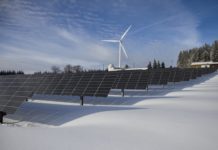Renewable energy comes from naturally replenished sources and may generate electricity indefinitely. It differs from finite energy sources, such as fossil fuels, which can not be replaced.
Renewable-energy sources
You can invest in renewable energy by buying the stocks or bonds of electricity or utility companies or firms that make power-generating equipment. RobecoSAM’s Smart Energy and Smart Mobility funds target this area.
Renewable energy sources include:
- Hydroelectric power dates to pre-Roman times, when the water wheel was utilized to process maize. It is been used industrially since the 19th century. River dams harness water power. The Three Gorges dam complex in China can generate 22.5 gigawatts of electricity, comparable to 40 coal-fired power plants. They also cause environmental harm, human rights violations, and river diversion.
- Wind power is harnessed by turbines at wind farms, which are often offshore. Large wind farms may power entire towns with skyscraper-sized turbines. The world’s largest wind farm is in Gansu, China, and includes 7,000 turbines.
- Photovoltaic panels convert solar energy into heat. They rely on light refraction, thus a bright sun is not necessary. Jodhpur, India’s 40-square-kilometer solar park can generate 2.2 gigawatts of power.
- Biomass electricity comes from burning living or decaying biological resources including wood, plants, forest wastes, and compost. It is burned in power plants or turned into biofuels like ethanol to power engines. Rapeseed is a biofuel crop. Burning biomass produces greenhouse gases, thus it is not as green as other renewable sources. Many coal-fired plants are being converted to biomass, including the 4 gigawatt Drax complex in the UK.
- Volcanic activity is the main source of geothermal heat. It exploits thermal springs heated by molten rock thousands of meters below the surface for 30% of Iceland’s electricity. This renewable energy source is limited to volcanic areas and generates only 14 gigawatts annually.
Investing in New Sources
Tidal power is a potential renewable energy source. Barrages are spread across river estuaries to harness the tide. This requires a considerably longer geographical reach than a dam to tap into tides and is weaker than water flowing via a dam or waterfall.
Green hydrogen is gaining popularity. Electrolysis from renewable sources breaks water into hydrogen and oxygen. The released hydrogen can power fuel cells that could replace internal combustion engines. Hydrogen requires large-scale electrolysis equipment, making it more expensive than other renewable sources.
Paris Agreement
Almost all renewable energy is harnessed by turbines and not consumed, therefore it does not cause greenhouse gas emissions. They are viewed as crucial to meeting the Paris Agreement’s decarbonization goals.
Renewable energy is rising. According to the IEA’s Global Energy Review, it accounted for 28% of the world’s energy generation in 2020. 17% is hydro, 4% wind, 3% solar, 2% biofuels, and 2% geothermal.
Poor labor conditions in the extraction of minerals for renewable energy equipment and deforestation or land clearance for large-scale solar parks are ESG hazards.
If you want to check out more articles like this, here’s one about Geothermal Energy.









